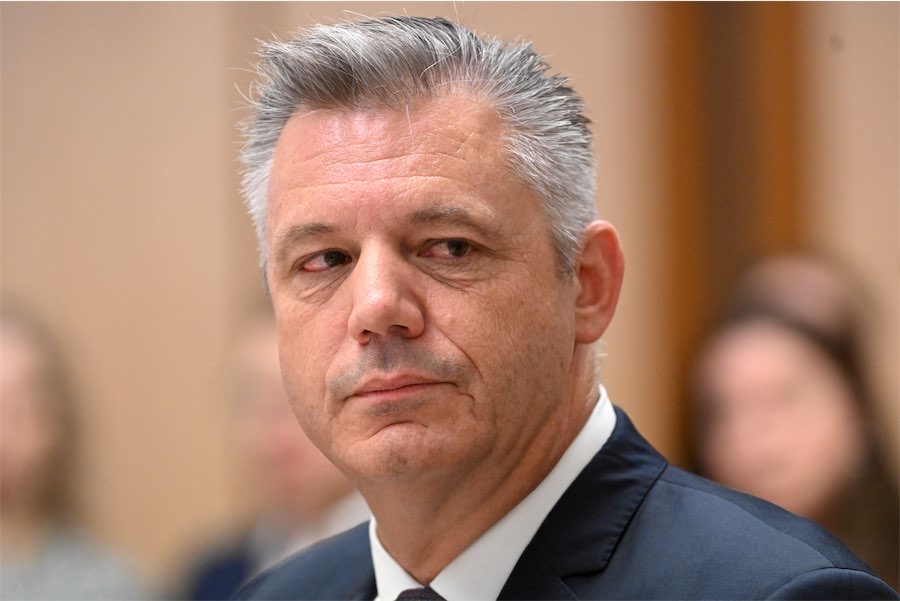THOUGH not the final concert of the festival, “The Fire and the Rose” never-the-less provided Christopher Latham with his perfect swansong as artistic director.

For despite the rigours of planning and delivering a very ambitious festival, Latham had held enough energy in reserve to conduct five of the seven demanding works on the program, commencing with the mighty “Mars – The Bringer of War”, one of the seven movements from “The Planets”, composed by Gustav Holst between 1914 and 1916.
The impressive Canberra Festival Orchestra, made up of ANU School of Music faculty, staff and students and Sprogis Woods Smith Young Artists responded to the considerable demands of this piece with commendable energy and precision, as they also did with the following work, “Romanza”, from Ralph Vaughan Williams’ WW2 Fifth Symphony, for which he utilised many of the musical themes from his operatic work “The Pilgrims Progress”. Its lush warm tones provided a soothing contrast to the bombast of “Mars”.
For the third work “Sunset Epilogue and Evening”, which Richard Strauss composed in 1915 prior to being absorbed into the military during World War 1, an organ and harps were added to the orchestra to assist in recreating a musical impression of a day’s mountain climb in the Bavarian Alps, climaxing in a fierce thunderstorm which ultimately dissolves into quiet sunset and eventual darkness. The attention to expression and detail by conductor and orchestra allowed the composers’ intentions to be easily imagined by the audience.
“Cortege”, a sombre but accessible short work, one of two remaining sections of a suite composed by Scotsman, Cecil Coles, in 1918, preceded, what for many was the highlight of the evening, the haunting “Symphony No 1 “Da Pacem Domine”, composed by Ross Edwards, one of the composers-in-residence for the festival.
For this work, except for a spotlight over didgeridoo player, William Barton, and the conductor, all other stage lights were extinguished. Light escaping from the individual orchestra lights suggested a starry sky, creating an eerie, beautiful and mysterious ambiance. With just the tiniest pulsing sound emanating from the orchestra, Barton began to wail. Eventually his wailing was replaced by the sounds of his didgeridoo, as the evocative orchestrations gathered momentum. An astonishing and evocative piece of writing, so compelling that when it ended no-one wanted to break the spell by clapping. However, when conductor, Christopher Latham called the composer on to the stage, the applause was thunderous. Partly in recognition of a remarkable composition by Edwards, partly for a remarkable performance by the orchestra, but mostly for the remarkable achievements of the conductor who had just conducted his last performance as Artistic Director of the Canberra International Music Festival.
In a graceful gesture, Latham had programmed the concert so that last two works were conducted by incoming Artistic Director, Roland Peelman. It was no surprise to learn that this performance of “Music of the Spheres” composed by Danish composer, Rued Langgaard between 1916 and 1918, was its Australian premiere. Not only does the work require huge musical and vocal resources, it also demands intense concentration from the conductor, the musicians and the audience. According to the program notes Langgaard claimed, that in composing the work, he had “completely abandoned any sort of motif, planned structure, form or coherence”.
What emerged sounded like a series of experiments to find out how many unusual sounds could be extracted from various combinations of musical instruments and voices. For a while, watching Roland Peelman coaxing, imploring and encouraging his vast resources, like a huge possessed praying mantis, was curiously fascinating but ultimately, with the realisation that all these extraordinary sounds were leading nowhere, the whole enterprise seemed like a lot of effort for little result.
Much more interesting was the finale, “Requiem for Eli”, composed by Nigel Westlake to harness his grief over the sudden death of his son. Here, Peelman’s inspired conducting gave the orchestra and choirs the confidence to attack the great crashing walls of despair brilliantly encapsulated in this brief but brilliant composition, providing a stunning end to a challenging and ultimately satisfying concert.
Who can be trusted?
In a world of spin and confusion, there’s never been a more important time to support independent journalism in Canberra.
If you trust our work online and want to enforce the power of independent voices, I invite you to make a small contribution.
Every dollar of support is invested back into our journalism to help keep citynews.com.au strong and free.
Thank you,
Ian Meikle, editor




Leave a Reply